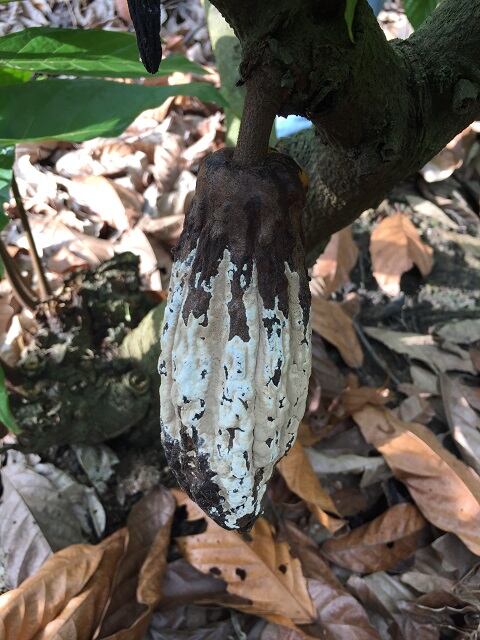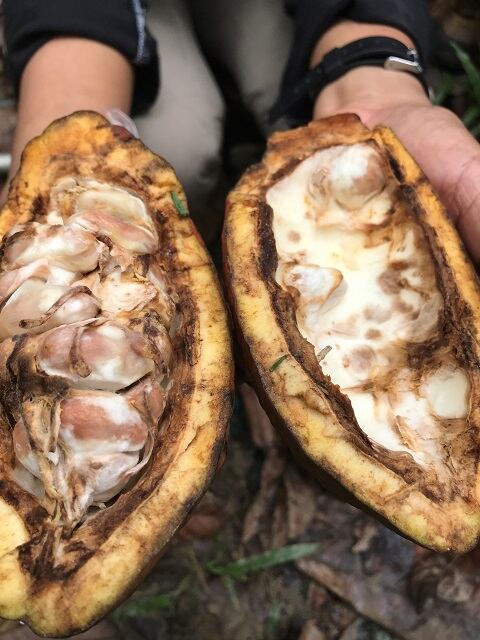“Despite it being one of the top 10 commodities traded, cocoa has not received the scientific attention paid to crops such as rice, corn and wheat,” Jean-Philippe Marelli, integrated pest management director at Mars Wrigley Confectionery, said.
According to Marelli, who was in Boston yesterday for the International Congress of Plant Pathology (ICPP) where he took part on a panel discussion on the threats faced by cocoa production, this oversight can be partially explained by a lack of funding in producing countries.
Yet, the high concentration of cocoa production in some countries means these crop losses and diminishing yields can be devastating for farmers.
“While yields for other crops have dramatically improved over past decades, cocoa yield has plateaued, as it struggles to cope with pests and diseases that are not well understood," he told FoodNavigator.
Two million small-scale farmers in Africa produce up to 70% of the world’s cocoa, and the Côte d’Ivoire alone produces 40%. Cocoa production accounts for 15% of Ivorian Gross Domestic Product (GDP) and employs 5% of households.
“While pathogens and pests affect all cocoa-producing countries in some form or another, the Côte d’Ivoire is particularly impacted given the importance of this sector to the country’s economy,” Marelli said. “In addition to that, the Côte d’Ivoire is being impacted by a disease that has no cure, and the only solution is to uproot the tree and start from zero, which is devastating to the farmers.”
The Threats
The main disease is Black Pod, which exists in all cocoa-growing countries in the world and is responsible for 20-30% of global losses. As its name suggests, black pod covers the cocoa pod with small, dark spots before causing the pod to rot and shrivel. It can also affect the trunk, which if not treated in time, can kill the entire tree.

Witches’ broom disease is caused by a fungus that attacks actively growing tissue and causes cocoa trees to produce an abnormal number of swollen branches.
Frosty Pod is another fungus which affects pod tissues and can produce millions of spores making the pod look as if it is covered in a layer of frost. Both these fungi are mainly present in Latin America.
Prevalent in West Africa, Cacao Swollen Shoot Virus (CSSV) is a viral disease caused by a complex mix of ten viral species that drastically reduces cocoa yield and kills trees within three to four years of infection. “[This] disease has no cure, and the only solution is to uproot the tree and start from zero, which is devastating to the farmers,” said Marelli.
Crops in South-East Asia are mainly affected by the Cocoa Pod Borer, a type of a moth whose larvae feed on the inside of cocoa pods.
Lesser diseases include Vascular Streak Die Back and Ceratocystis Wilt that affect the tree’s vascular system, causing the leaves to wilt and fall.
A growing problem
However, this is a problem that is not going away.
Pests and diseases are increasing in prevalence due to an increase in human trade, travel and climate change, and Marelli believes this already high figure of 38% is on the rise.
“Most cocoa planted is in West Africa where the trees are ageing and soils are becoming increasingly poor. This is making the crop even more susceptible to fungal diseases and viruses; with the greater mobility of people and goods, there is of course a greater chance of spreading pathogens via human

activities.”
Rising global temperatures make pests and disease more frequent while extreme climatic events such as droughts, windstorms and floods can destroy crops.
According to models by the Intergovernmental Panel on Climate Change (IPCC), the West African climate is becoming hotter and drier, which is worsening cocoa crop output.
“This outlook, coupled with the fact that cocoa yields have not significantly improved in over 100 years, makes it imperative that more research is done to try to understand the complex range of pathogens and pests which affect cocoa, and find new varieties that are more resistant to them.”
Action
So what is being done – and is it enough to stem the tide?
In 2017, the Côte d’Ivoire launched a five-year national program to tackle CSSV which involves destroying 100,000 hectares (ha) of infected farms. Ghana also plans to eradicate an area of 156,000 ha. In both countries, education programmes play an important role in convincing farmers of the necessity of taking such preventative measures.
Where does our chocolate come from?
The top cocoa-producing in 2017 were:
Côte d'Ivoire
Ghana
Indonesia
Brazil
Cameroon
Nigeria
Ecuador
Peru
Dominican Republic
Colombia
The Côte d’Ivoire produced just over 1.4 million metric tonnes of cocoa in 2017, almost double the output of the next biggest producer country, Ghana which produced 0.8m MT.
Source: Euromonitor
They are also encouraged to diversify their crops to increase income and spread the risk. This can also protect farmers from commodity price fluctuations.
Industry is also getting involved. Mars, which sources its indirectly cocoa through suppliers, has signed a Memorandum of Understanding with the Ivorian government to contribute to its CSSV scheme.
It also works with partners in each country, such as the Côte D’Ivoire’s Centre National de Recherche Agronomique (CNRA) and Costa Rica’s Centro Agronómico Tropical de Investigación (CATIE).
CocoaAction, a sustainable cocoa programme created by industry body The World Cocoa Foundation (WCF) that is supported by 10 major cocoa and chocolate firms such as Mars and Nestlé, focusses on disease and pest management in Ghana and the Côte d’Ivoire.
It has participated in genome sequencing projects producing data that has been placed in the public domain.
“Genome sequencing allows you […] to identify the gene and then work out what makes these pathogens so persistent - you do not change the DNA with sequencing," he explained.
“We use genomic data to allow us to find solutions to better equip farmers for environmental change and the spread of threats to cocoa,” he said. “This is foundational knowledge that will help scientists worldwide breed new varieties of cocoa that answer the needs of the farmers.”
“We [...] plan to release those to farmers in a few years’ time,” Marelli said.
Although industry has made good progress, "a lot of work still needs to be done", Marellli said.
"We believe collaboration is key to this. Improving crop resilience will go a long way to stabilising the price of cocoa in global markets - something that is especially important for low-income cocoa farmers," he said.
